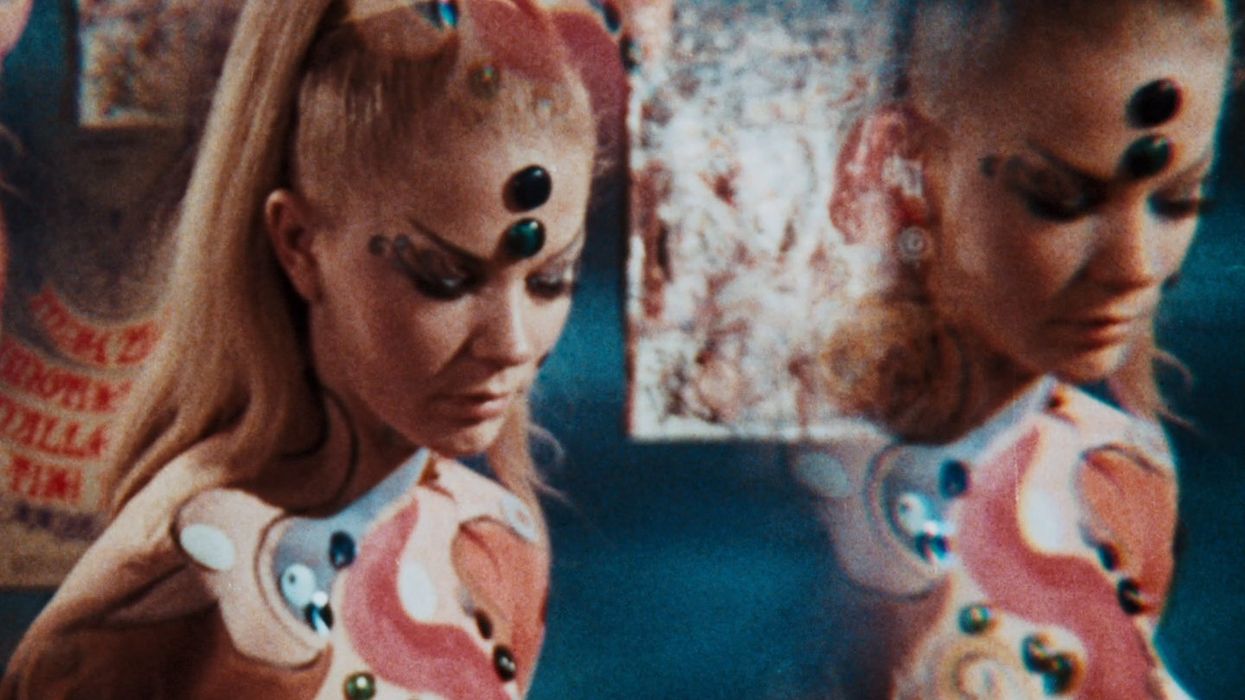Watch: How Roger Corman Gave Rise to Scorsese, Coppola, and New Hollywood
Roger Corman has made 400 movies. No wonder he's one of the fathers of American film.

[Editor's Note: The following introduction was written by Max Winter.]
Where does the American arthouse movie come from? The classics of the 1960s and 1970s, like Easy Rider, Bonnie and Clyde, The Graduate? Or from Europe, from the minds of eager young filmmakers anxious to replicate the intellectual integrity they saw in films made abroad? Sort of, but not really.
How about from the influence of Roger Corman, master of the B-movie? You know, the movies with 600-foot-tall bikini-clad heroines? Fake blood? Lights, camera, exploitation?
It is so. Thanks to Corman, we have Scorsese, Coppola, and the auteurs that comprise New Hollywood. Tyler Knudsen's wonderful new video essay tells the tale.
By the early 1960s, the studio system in Hollywood, which gave a few huge movie studios more or less a monopoly over filmmaking, was on its way out, due to the fact that many studio heads were aging and had no one to replace them.
Then there was Roger Corman, whose rough-and-ready, "Disposable Cinema" approach was bringing audiences into theaters by the bucketload. Whatever one might say about his films, Corman was sensitive enough to see that his growing power as a director and producer put him in a position to nurture and promote young directing talent. And nurture and promote he did.
One of the earliest directors to spring from Corman's encouragement was Francis Ford Coppola.
One of the first directors to spring from Corman's encouragement was Francis Ford Coppola. Coppola started modestly, with Battle Beyond the Sun, a Russian sci-fi film dubbed in English and marketed to American viewers. But as we know, he would go on to direct such great films as The Godfather, Apocalypse Now, The Conversation, and scores of other masterpieces. Peter Bogdanovich was another young filmmaker to benefit from Corman's support, as were Ron Howard and Martin Scorsese. Corman boosted actors as well: Dennis Hopper, Jack Nicholson, and Peter Fonda were among those to find their way to the screen, thanks to Corman.
The kindling lit by Corman's enthusiasm would lead to grander and grander films, as Knudsen shows us; a certain generation of directors was on fire in the late 1960s and 1970s, fueled by a sense of American potential response to European film craft. One notable film born of this aspiration was Bonnie and Clyde, whose script passed under the gaze of Francois Truffaut and Jean-Luc Godard before finding its way back to American shores where, after being marketed as an art film about gangsters, it became a giant success, even being nominated for Best Picture.
American film had changed utterly. A terrible beauty was born—namely, a vision of filmmaking that burst its own seams.
American film had changed utterly. A terrible beauty was born—namely, a vision of filmmaking that burst its own seams. Case in point: George Lucas. Lucas's American Graffiti was well-regarded, but he decided he wanted to try something else, namely an operatic story set in outer space, by the name of Star Wars. One of Lucas's contemporaries made a similar experiment, by gazing into the tormented psyche of a large, hungry shark. (That's right: Jaws.)
The intelligence and courage of these dynamic filmmakers would lead to a host of films which have proven influential and timeless, such as The Graduate, Butch Cassidy and the Sundance Kid, and Easy Rider. And although the verve of New Hollywood would eventually subside as blockbusters became increasingly popular, these early films remain testaments to what can be done with the support of one powerful person with an expansive vision.
This video essay, a collaboration by Press Play and No Film School, is the newest in a series on film movements, their histories, and their enduring influence. Familiarity with movements of the past is crucial to the understanding of current cinematic trends.










![Ethos, Pathos, Logos: 20 Effective Ways to Advertise [Infographic]](https://nofilmschool.com/media-library/ethos-pathos-logos-20-effective-ways-to-advertise-infographic.jpg?id=34064614&width=600&height=600&quality=90&coordinates=560%2C0%2C0%2C0)

